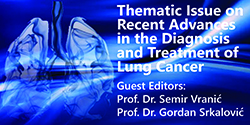The cariostatic mechanisms of fluoride
DOI:
https://doi.org/10.5644/ama2006-124.85Keywords:
Dental caries, Fluorides, Tooth remineralizationAbstract
This article discusses the possible cariostatic mechanisms of the action of fluoride. In the past, fluoride inhibition of caries was ascribed to reduced solubility of enamel due to incorporation of fluoride (F–) into the enamel minerals. The present evidence from clinical and laboratory studies suggests that the caries-preventive mode of action of fluoride is mainly topical. There is convincing evidence that fluoride has a major effect on demineralisation and remineralisation of dental hard tissue. The source of this fluoride could either be fluorapatite (formed due to the incorporation of fluoride into enamel) or calcium fluoride (CaF2)-like precipitates, which are formed on the enamel and in the plaque after application of topical fluoride. Calcium fluoride deposits are protected from rapid dissolution by a phosphate –protein coating of salivary origin. At lower pH, the coating is lost and an increased dissolution rate of calcium fluoride occurs. The CaF2, therefore, act as an efficient source of free fluoride ions during the cariogenic challenge. The current evidence indicates that fluoride has a direct and indirect effect on bacterial cells, although the in vivo implications of this are still not clear. Conclusion. A better understanding of the mechanisms of the action of fluoride is very important for caries prevention and control. The effectiveness of fluoride as a cariostatic agent depends on the availability of free fluoride in plaque during cariogenic challenge, i.e. during acid production. Thus, a constant supply of low levels of fluoride in biofilm/saliva/dental interference is considered the most beneficial in preventing dental caries.Downloads
Published
15.11.2013
Issue
Section
Fluoride and caries prevention
How to Cite
The cariostatic mechanisms of fluoride. (2013). Acta Medica Academica, 42(2), 179. https://doi.org/10.5644/ama2006-124.85






